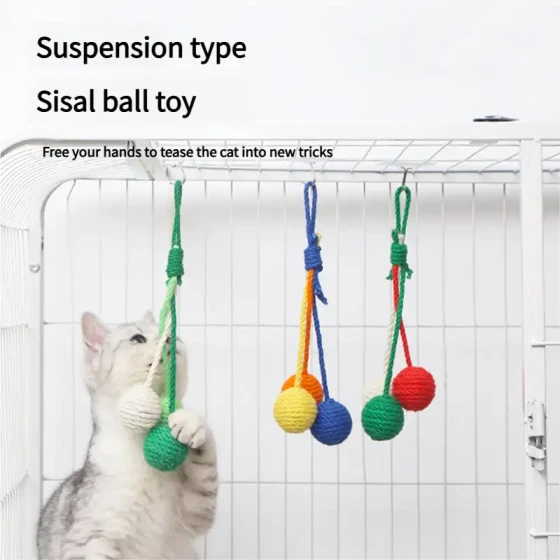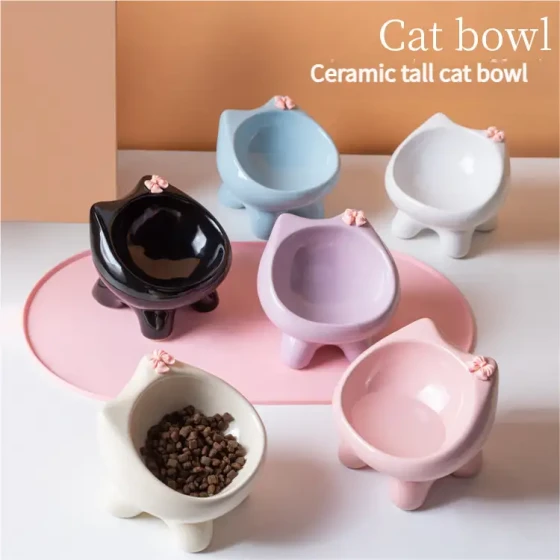Cat-raising girl has intracranial parasites_Pet owners need to be alert to zoonotic diseases
Many “cat owners” may worry about parasites carried by their pets while enjoying the warm companionship of cats. In recent years, reports about cat-raising potentially causing parasitic infections in humans, even leading to intracranial parasites, have made many pet owners anxious. So, does raising cats really cause intracranial parasites? How should pet owners be alert to and prevent these zoonotic diseases?

The connection between raising cats and intracranial parasites mainly focuses on a parasite called Toxoplasma gondii. Toxoplasma gondii is a single-celled parasite, with felines as its primary definitive hosts. Cats can get infected after eating infected rodents, birds, or other small animals, and excrete Toxoplasma oocysts in their feces. Humans can be infected by Toxoplasma through various routes, including contact with cat feces containing oocysts, consumption of undercooked meat, or contaminated water and food. Toxoplasma infection is very common among people, with about one-third of the global population possibly infected.
In most cases, healthy adults infected with Toxoplasma may have no obvious symptoms or only mild flu-like symptoms, such as swollen lymph nodes, muscle pain, etc., which typically resolve within weeks or months. However, for individuals with weakened immune systems (such as AIDS patients or organ transplant recipients) and pregnant women, Toxoplasma infection can cause serious health issues. Pregnant women who acquire Toxoplasma infection for the first time during pregnancy may transmit the parasite to the fetus, leading to congenital toxoplasmosis, which in severe cases can cause fetal hydrocephalus, microcephaly, chorioretinitis, or even miscarriage or stillbirth.
Although Toxoplasma mainly invades lymph nodes, eyes, heart, and other organs, in very rare cases, it can infect the central nervous system, causing toxoplasma encephalitis, which manifests as headaches, seizures, altered consciousness, and other neurological symptoms. Regarding cases like “cat-raising girl having intracranial parasites,” specific analysis is needed. While Toxoplasma is a cat-related parasite that can infect the brain, other parasites such as spargana can also infect the human brain. Spargana infection is mainly related to eating raw or undercooked frog or snake meat or drinking untreated water containing larvae. Cats and dogs can also be hosts of spargana, but direct transmission to humans usually occurs via food or water.
Therefore, attributing all intracranial parasite cases in cat owners solely to cats is not rigorous. Humans have various routes of parasite infection, and contact with pets is only one possibility, which can generally be prevented effectively through good hygiene practices.
Pet owners need to be alert to zoonotic diseases
Keeping pets indeed involves some risk of zoonotic diseases. Besides Toxoplasma, other diseases pet owners should be aware of include:
- Cat scratch disease: Caused by Bartonella henselae, primarily transmitted through cat scratches or bites, causing localized lymph node enlargement, fever, and other symptoms.
- Rabies: A highly fatal viral disease mainly transmitted through bites from infected animals. Although both cats and dogs can transmit rabies, regular vaccination of pets can effectively prevent it.
- Salmonellosis and campylobacteriosis: These bacteria may be present in pet feces, spreading through contact, causing diarrhea, vomiting, and other gastrointestinal symptoms in humans.
- Skin fungal infections (e.g., ringworm): Can be transmitted to humans through direct contact with infected pets, causing itching, redness, and other skin symptoms.
- Intestinal parasites: Besides Toxoplasma, cats and dogs may carry roundworms, hookworms, tapeworms, and other intestinal parasites whose eggs can contaminate the environment through feces and infect humans if ingested accidentally.
It should be emphasized that the transmission of these diseases is not uncontrollable; through scientific breeding and hygiene management, most risks can be effectively reduced.
How to raise pets scientifically and reduce zoonotic disease risks?
Responsible pet owners take a series of measures to protect the health of themselves and their families:
- Regular check-ups and deworming: Follow the veterinarian’s advice to regularly bring pets for health check-ups, internal and external deworming, and vaccinations. This can effectively control parasites and sources of disease transmission on pets.
- Maintain environmental hygiene: Clean pet feces promptly, especially cat litter boxes. Toxoplasma oocysts in cat feces need 1-5 days to become infectious, so daily cleaning of litter boxes can significantly reduce infection risk. It is best to wear gloves when cleaning feces and wash hands thoroughly afterward.
- Pay attention to personal hygiene: After contact with pets, especially when handling pet feces, food, or toys, wash hands thoroughly with soap and running water. Avoid letting pets lick the mouth, face, or open wounds.
- Control pet diet: Feed pets cooked food or commercial pet food, avoiding raw or undercooked meat, which reduces the risk of pets being infected with Toxoplasma and other parasites.
- Keep pets indoors when possible: Keeping cats indoors can effectively reduce their exposure to pathogens and lower the risk of parasite infection and transmission to humans.
- Protection for special groups: Pregnant women, women planning pregnancy, immunocompromised individuals, and infants are high-risk groups that need extra caution when interacting with pets. It is recommended to avoid cleaning cat litter boxes; if necessary, wear gloves and take protective measures. Pre-pregnancy or pregnancy TORCH screening can check for Toxoplasma infection.
- Separate raw and cooked foods: In the kitchen, keep raw and cooked foods separate to prevent cross-contamination. This is an important measure not only to prevent pet-related diseases but also to ensure food safety.
- Avoid contact with stray and wild animals: Stray and wild animals usually carry higher pathogen risks and should be avoided.
- Do not drink untreated water: Drink boiled or treated water, avoiding untreated raw water to prevent various waterborne parasitic infections, including spargana.
Frequently Asked Questions
- Does raising cats definitely cause Toxoplasma infection?
Not necessarily. Many pet cats have never been exposed to Toxoplasma. Even if infected, they only shed infectious oocysts for a short period after initial infection, and oocysts need a few days to become infectious. With good hygiene, the risk of infection is very low. - What symptoms does Toxoplasma infection cause?
Most healthy adults show no symptoms or mild symptoms similar to a cold. However, it can cause serious illness including neurological issues in immunocompromised people and pregnant women. - How can I know if I am infected with Toxoplasma?
Blood tests for Toxoplasma antibodies can determine if one is infected. - What should pregnant women do if infected with Toxoplasma?
Pregnant women infected with Toxoplasma should seek medical care promptly. Doctors will assess risks and treat accordingly to reduce fetal impact. Infection does not always cause fetal deformities; medical intervention can lower risks.
In summary, although raising pets involves some risk of zoonotic diseases, it does not mean we need to “fear cats.” By understanding the main transmission routes and adopting scientific preventive measures such as regular check-ups and deworming, maintaining environmental and personal hygiene, and ensuring food safety, most risks can be controlled. While enjoying the joy pets bring, pet owners should also be responsible and knowledgeable, so that love and health go hand in hand.

-560x560.webp)



-560x560.webp)